Today’s customers move between social media, websites, apps, and physical stores before making a purchase. The challenge for businesses is keeping that experience consistent and personalized across every channel. This is exactly what omnichannel marketing is designed to achieve.
What is Omnichannel Marketing?
Omnichannel marketing is the practice of creating a unified and consistent experience for customers across all channels; online and offline. Instead of managing platforms in isolation, it connects them into a single journey where every interaction builds on the last.
That means your website, mobile app, email campaigns, physical store, and even customer service are not separate touchpoints but part of the same story. When done well, customers feel recognized no matter how or where they engage with your brand.
Here’s what defines omnichannel marketing:
- Consistency across channels – messaging, design, and offers feel familiar whether customers see them on Instagram, email, or in-store.
- Integrated data – customer behavior (like browsing, cart history, or past purchases) is shared across platforms to personalize experiences.
- Customer-centric view – instead of thinking in terms of “email” or “social,” the focus is on the customer’s entire journey.
- Flexibility – customers can start on one channel and finish on another without friction (e.g., browse on mobile, buy in-store, return online).
Omnichannel vs. Multichannel Marketing
It’s common to confuse omnichannel marketing with multichannel marketing, but they’re not the same. Both involve engaging customers across different platforms, but the way they handle those interactions is very different.

Multichannel marketing is about presence. A brand might run campaigns on social media, email, and in-store, but those channels often function independently. A customer could see an ad on Instagram and then walk into a physical store, yet the staff there might have no awareness of that interaction.
Omnichannel marketing, on the other hand, is about connection. Here, all channels are integrated and share data, creating a single, unified view of the customer. That means whether a shopper interacts via app, website, or store, they get a consistent, personalized experience that acknowledges their previous interactions.
Quick Comparison: Omnichannel vs. Multichannel
| Aspect | Multichannel Marketing | Omnichannel Marketing |
| Channel connection | Channels operate separately, with little or no data sharing. | All channels are integrated, sharing data for a unified customer view. |
| Customer experience | Customers may receive inconsistent or repetitive messages. | Customers enjoy consistent, personalized interactions across all touchpoints. |
| Business focus | Emphasis is on maximizing presence on each channel. | Emphasis is on the customer journey as a whole. |
| Example scenario | A shopper sees a Facebook ad but finds no related offers in-store. | A shopper adds to cart on mobile, receives a follow-up email, and can buy in-store easily. |
| Outcome | More channels = more reach, but experiences feel fragmented. | Connected channels = smoother journeys and stronger customer loyalty. |
Why Omnichannel Marketing Matters in 2025 and Beyond
Consumers today expect personalization and convenience. A report from the Digital Marketing Institute highlights that 90% of customers want consistent interactions across all channels. The stakes are higher in 2025: fragmented experiences risk not just abandoned carts but lost loyalty.
Businesses that embrace an omnichannel strategy gain more than just short-term sales. They build long-term trust. When a customer feels understood and remembered at every touchpoint, they’re more likely to return, recommend, and engage. For brands facing tighter competition and rising advertising costs, that loyalty is priceless.
Core Elements of an Omnichannel Marketing Strategy
Building an effective omnichannel approach requires more than simply being present on multiple platforms. It’s about designing a connected ecosystem where every channel supports the customer journey. Here are the core elements that make it work:
1. Unified Customer Data and Analytics
Data is the backbone of any omnichannel effort. Without it, personalization and consistency fall apart. Brands need a centralized source of truth that gathers insights from every touchpoint.
Key practices include:
- Collecting customer data across online and offline channels (website, email, in-store, support).
- Using a CRM or CDP (Customer Data Platform) to unify this data.
- Tracking behavioral patterns, purchase history, and preferences to inform campaigns.
2. Consistent Messaging and Creative Assets
Customers view your brand as one entity, not as separate “channels.” This makes consistent voice, visuals, and offers essential.
To achieve this:
- Maintain brand guidelines across all assets (design, tone, offers).
- Adjust messaging for the context of each channel, while keeping the core promise aligned.
- Ensure promotions or discounts are reflected across channels to avoid confusion.
3. Integrated Technology Stack
Even the best strategy fails without the right technology. Your systems must talk to each other to avoid silos and deliver a smooth experience.
An integrated stack should:
- Connect marketing automation, CRM, analytics, and POS systems.
- Enable real-time data sharing across teams.
- Support cross-channel automation (e.g., email triggered by website behavior, in-store purchase syncing with app notifications).
At a Glance: Core Elements of Omnichannel Strategy
| Element | Why It Matters |
| Unified Customer Data | Provides a single view of the customer, enabling personalization at scale. |
| Consistent Messaging | Ensures the brand feels recognizable and trustworthy across all touchpoints. |
| Integrated Tech Stack | Eliminates silos, allowing seamless data flow and automation between platforms. |
Omnichannel Marketing Tools and Platforms
The right tools are the backbone of a successful omnichannel strategy. They connect your channels, unify customer data, and automate personalized experiences at scale. Here are some of the most trusted platforms businesses use today:
HubSpot
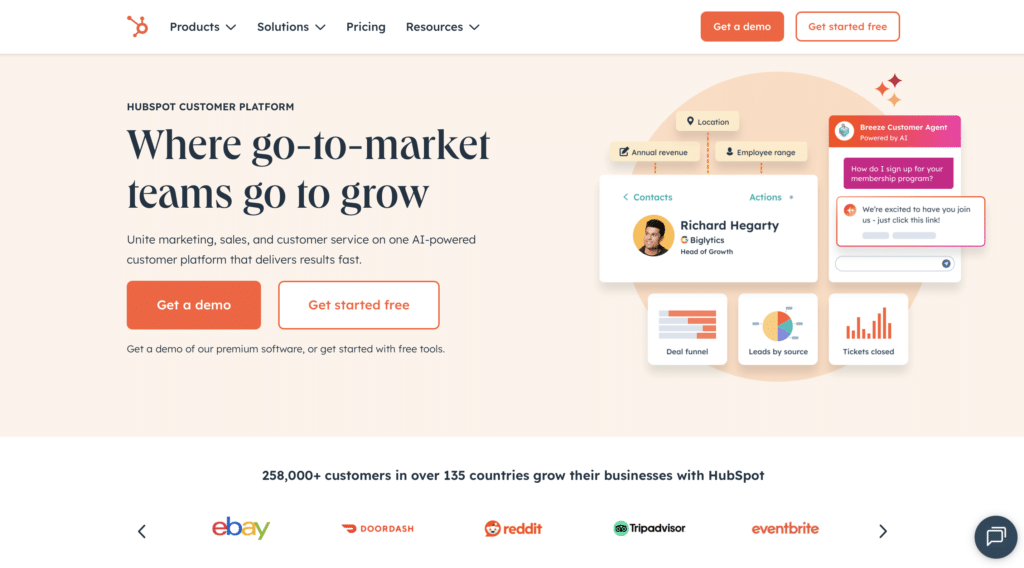
HubSpot offers an all-in-one CRM with marketing automation, content management, and detailed analytics. Its biggest strength is unifying customer data across campaigns, giving teams a clear view of each stage in the buyer’s journey. For small to mid-sized businesses, HubSpot provides an accessible entry point into omni channel marketing without needing heavy IT resources.
Best for: Small and mid-sized companies looking for a flexible, easy-to-use platform.
Salesforce Marketing Cloud
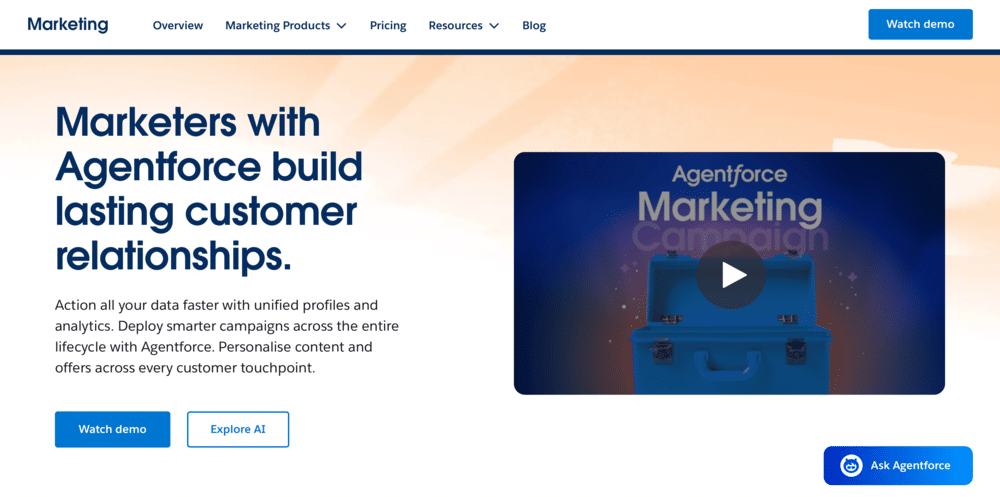
Salesforce is often the choice for enterprises managing complex campaigns across regions and product lines. With AI-powered insights, advanced segmentation, and automation, it helps brands scale personalization for millions of customers. Its ability to integrate with other Salesforce products makes it especially valuable for organizations already in that ecosystem.
Best for: Large enterprises focused on global campaigns and advanced customer segmentation.
Klaviyo

Klaviyo has become a favorite for e-commerce brands. It integrates smoothly with Shopify, Magento, and WooCommerce, enabling personalized email and SMS campaigns that respond to customer behavior in real time. Whether it’s abandoned cart reminders or product recommendations, Klaviyo helps online retailers boost conversions through timely, relevant communication.
Best for: E-commerce businesses that want data-driven email and SMS marketing.
Adobe Experience Cloud
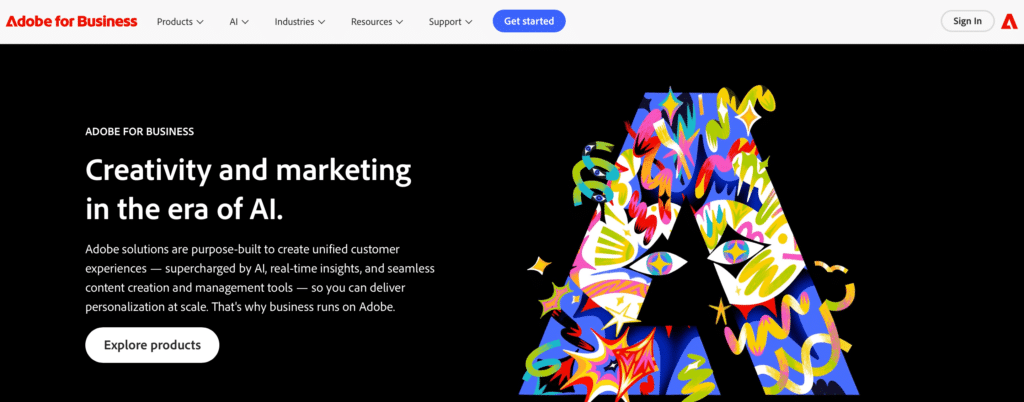
Adobe’s platform combines analytics, content management, AI personalization, and customer journey mapping. It’s a powerful tool for businesses needing deep insights into how customers move across digital channels. With Adobe Target and Adobe Analytics, brands can run advanced A/B testing and personalization at scale.
Best for: Brands with complex digital experiences needing advanced analytics and testing.
Oracle Marketing Cloud (Responsys & Eloqua)
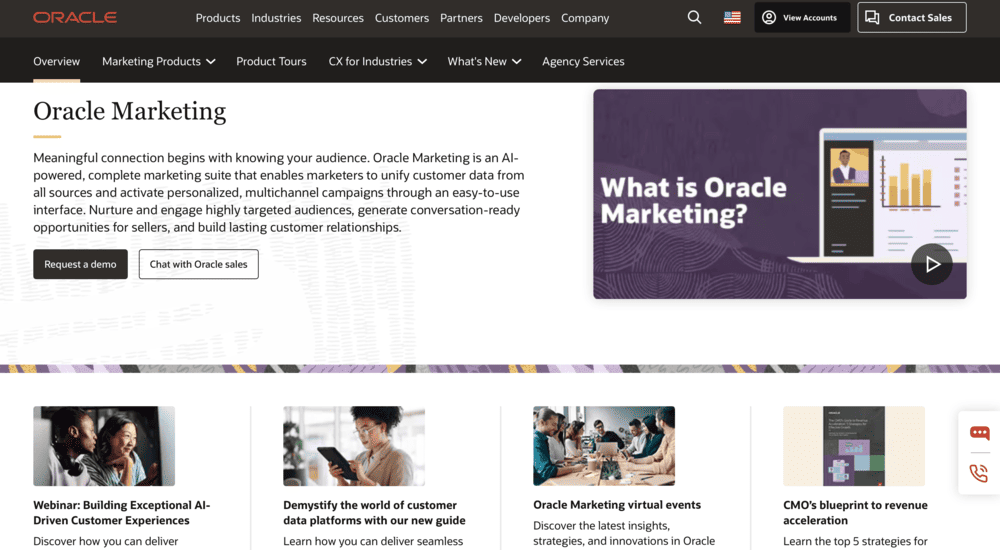
Oracle provides a suite of marketing automation tools designed for B2B and B2C enterprises. Eloqua excels in lead nurturing for long sales cycles, while Responsys is built for high-volume B2C campaigns. Both integrate with Oracle’s data solutions, making them strong choices for organizations prioritizing data-driven decisions.
Best for: Enterprises needing deep integration with large-scale data management.
Zoho Marketing Plus
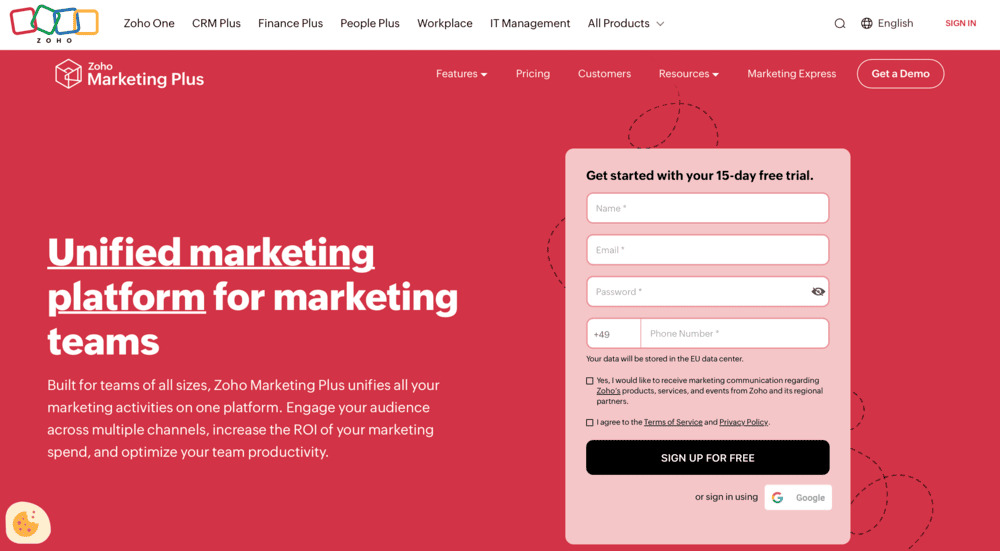
Zoho offers a cost-effective suite covering email marketing, social media, and analytics, all tied into its CRM. While not as advanced as Salesforce or Adobe, it’s popular among startups and small businesses looking for affordable omnichannel marketing tools that cover the essentials.
Best for: Startups and SMEs on a budget looking for an all-in-one option.
Leading Omnichannel Platforms Table
| Platform | Strengths | Best For |
| HubSpot | Unified CRM, marketing automation, user-friendly interface | Small to mid-sized businesses |
| Salesforce Marketing Cloud | AI-driven personalization, advanced segmentation, enterprise integrations | Large enterprises with global campaigns |
| Klaviyo | E-commerce integrations, email & SMS personalization | Online retailers and DTC brands |
| Adobe Experience Cloud | Deep analytics, content management, AI-powered personalization | Complex digital brands needing advanced insights |
| Oracle Marketing Cloud | Powerful B2B & B2C tools, lead nurturing, data-driven decision-making | Enterprises with large datasets and long cycles |
| Zoho Marketing Plus | Affordable, all-in-one suite with CRM tie-in | Startups and small businesses |
How to Build an Omnichannel Strategy from Scratch
Getting started with omnichannel doesn’t mean tearing down everything you already have. The smarter approach is to build gradually, layering in the pieces that make the biggest difference first.
1. Map the customer journey
You can’t connect experiences if you don’t know what they look like today. Take a close look at how customers find you, where they engage, and where they drop off. This isn’t just data analysis, talk to customers, review support tickets, and study how people actually move between channels.
2. Connect your systems and your teams
Omnichannel falls apart when sales, marketing, and support are all working with different versions of customer data. Invest in a CRM or CDP that acts as your “single source of truth,” and make sure every team has access to it. The technology matters, but so does culture—people need to work together around the same customer goals.
3. Start with one or two integrations
It’s tempting to go big right away, but the most effective omnichannel rollouts start small. For example, link your website browsing behavior to your email platform so you can follow up when a cart is abandoned. Once you see results there, extend the same logic to SMS, in-store, or social. Scaling works best when you’ve already proven value in one area.
4. Build personalization into every touchpoint
Omnichannel is about being relevant. If someone browses a product, make sure the offer they see on social or in-store reflects that interest. Even small touches, like a consistent discount code across channels or staff knowing a returning customer’s history, can have an outsized impact.
In other words, the best way to build an omnichannel strategy is to think like your customer. Start by understanding their path, then connect your systems, prove what works, and expand carefully. The end result isn’t complexity; it’s simplicity for the customer.
Conclusion
Omnichannel marketing is all about making every interaction feel connected. When done right, it creates consistency, builds trust, and keeps customers coming back.If you’re not sure where to start, reach out to our DesigningIT experts. We’ll help you design and implement an omnichannel strategy that works for your business.

